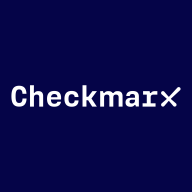


Checkmarx One and Tanium are both major players in the cybersecurity sector, with Checkmarx focusing on static code analysis and Tanium on endpoint security. Checkmarx One demonstrates a significant advantage in vulnerability identification within software code.
Features: Checkmarx One provides comprehensive code analysis without needing code compilation, supports many programming languages, and integrates with major repositories. Its incremental scanning process enhances efficiency in identifying vulnerabilities. Tanium specializes in offering detailed network analytics and proficient inventory management while focusing on endpoint protection rather than static code.
Room for Improvement: Checkmarx One struggles with false positives and lacks support for certain languages. It also needs enhancements in role management and API functionality. Tanium similarly faces issues with false positives in threat detection and requires improvements in scalability and a clearer user interface.
Ease of Deployment and Customer Service: Checkmarx One supports flexible deployment options across private, public, and hybrid clouds, including on-premises installations. It generally receives positive customer service reviews, although some delays in issue resolution are noted. Tanium offers primarily on-premises and private cloud solutions and receives high ratings for its knowledgeable technical support.
Pricing and ROI: Checkmarx One is considered expensive with a licensing model based on code lines and users, but it delivers considerable ROI by mitigating security issues early in the development cycle. Tanium is also seen as costly, especially in Latin America, yet it provides significant value through robust features and functionalities.
| Product | Market Share (%) |
|---|---|
| Zafran Security | 1.0% |
| Checkmarx One | 1.2% |
| Tanium | 2.4% |
| Other | 95.4% |



| Company Size | Count |
|---|---|
| Small Business | 30 |
| Midsize Enterprise | 9 |
| Large Enterprise | 38 |
| Company Size | Count |
|---|---|
| Small Business | 4 |
| Midsize Enterprise | 3 |
| Large Enterprise | 10 |
Zafran Security integrates with existing security tools to identify and mitigate vulnerabilities effectively, proving that most critical vulnerabilities are not exploitable, optimizing threat management.
Zafran Security introduces an innovative operating model for managing security threats and vulnerabilities. By leveraging the threat exposure management platform, it pinpoints and prioritizes exploitable vulnerabilities, reducing risk through immediate remediation. This platform enhances your hybrid cloud security by normalizing vulnerability signals and integrating specific IT context data, such as CVE runtime presence and internet asset reachability, into its analysis. No longer reliant on patch windows, Zafran Security allows you to manage risks actively.
What are the key features of Zafran Security?
What benefits can users expect from Zafran Security?
In industries where security is paramount, such as finance and healthcare, Zafran Security provides invaluable protection by ensuring that only exploitable vulnerabilities are addressed. It allows entities to maintain robust security measures while allocating resources efficiently, fitting seamlessly into existing security strategies.
Checkmarx One is an enterprise cloud-native application security platform focused on providing cross-tool, correlated results to help AppSec and developer teams prioritize where to focus time and resources.
Checkmarx One offers comprehensive application scanning across the SDLC:
Checkmarx One provides everything you need to secure application development from the first line of code through deployment and runtime in the cloud. With an ever-evolving set of AppSec engines, correlation and prioritization features, and AI capabilities, Checkmarx One helps consolidate expanding lists of AppSec tools and make better sense of results. Its capabilities are designed to provide an improved developer experience to build trust with development teams and ensure the success of your AppSec program investment.
Tanium Endpoint Platform reduces security risk, improves agility & increases efficiency, a fundamentally new approach to endpoint security's threat detection, indicent response, vulnerability assessment and configuration compliance & with management's software distribution, asset utilization, asset inventory and patch management.
We monitor all Vulnerability Management reviews to prevent fraudulent reviews and keep review quality high. We do not post reviews by company employees or direct competitors. We validate each review for authenticity via cross-reference with LinkedIn, and personal follow-up with the reviewer when necessary.